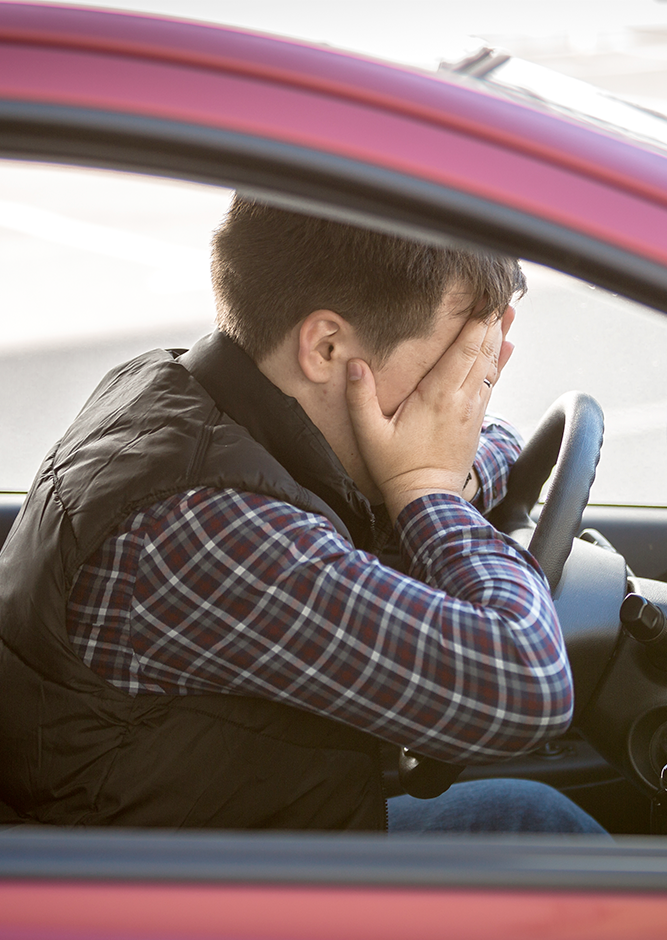
Driving is not easy, it’s true. It is normal, especially when you are a new driver, to feel some tension when it comes to getting behind the wheel. After all, driving a vehicle implies great responsibility.
The problem comes when that tension is so great that it blocks us, causes anxiety, and even makes us feel so bad physically that it prevents us from driving. This is what is known as amaxophobia.
The term comes from the Greek (hámaxa ‘cart’ and -phobia) and serves to describe the irrational fear of driving or traveling in a vehicle. This phobia is suffered by more than 28% of drivers in Spain, according to 2018 data published in a report by the CEA Foundation, although not all people suffer from it to the same degree.
Until this study was carried out, it was thought that amaxophobia affected women more, but the truth is that it affects men equally, although they are less likely to admit it.

The symptoms can include anxiety, excessive sweating on the hands, tachycardia, tremors in the arms and legs, shortness of breath, muscle pain… and can be triggered by situations such as:
- Driving over bridges: because of the idea of falling.
- Going through tunnels: because of feeling trapped.
- Moving on expressways: fear of having an accident or crashing.
- Very sharp curves: fear of the car tipping over.
- Roads with a separation wall: fear of crashing into it.
- Parking: thinking that you will not be able to park the vehicle.
- Steep descents in mountain passes.
- Heavy traffic: anxiety when driving with large vehicles.
- Adverse weather or driving in low light.
This disorder has many causes, although the most common trigger is having suffered or witnessed a traffic accident. But also:
- Circulating through unknown places.
- Not having a lot of practice when driving because you are a new driver or because you haven’t done it in a long time.
- Being alone or accompanied in the car. In the first case, because of not having someone by our side to help us or guide us when faced with a problem. And in the second, due to the enormous responsibility regarding safety that can be felt when carrying passengers.
- Fear of having an accident when pregnant or carrying children in the car.
- Negative thoughts.
- Low self-esteem.
- Predisposition to suffer anxiety or panic attacks.
- People in our close circle criticizing our way of driving.
- Being too perfectionist or displaying rigid behavior.
- Sensing a reduction of physical and mental abilities when it comes to getting behind the wheel.
“The fear of driving is preceded by anxiety problems,” explains the CEA Foundation psychologist responsible for the report, Ignacio Calvo. “Not all people who are afraid of driving have necessarily suffered a traffic accident in their life; rather, the number of people who are affected by this fear is increasing, the main cause being anxiety disorders such as claustrophobia, agoraphobia and acrophobia, among others.”
There is treatment

Recognizing the symptoms is the first step to recovery when suffering from amaxophobia. But since they are not always easy to recognize, there are tests offered free of charge by driving schools and psychological consultations that help to identify if there is a specific problem or if the person is really facing a more serious problem.
In any case, stopping driving does not have to be the only option. The good news is that there are therapies that help overcome these fears, such as those offered by CEA Foundation. But, in general, there are some guidelines that can help overcome the fear of driving:
- The mind is the most powerful tool. Visualizing and imagining driving smoothly and enjoying the ride can help build confidence.
- You can start by taking short routes behind the wheel. Perhaps even start by sitting in the car and starting the engine, without starting the vehicle. Once the person feels ready, they can progressively advance a few meters until they overcome their fear.
- Receiving reinforcement classes at the driving school, especially for those who have not driven for many years and want to start again, reinforces the driving skills that they feel they have lost. Thanks to them you can improve confidence behind the wheel. Some even offer virtual reality simulators that give the driver an immersive experience as if they were driving a real car, helping them get back in touch with driving without having to get into a vehicle.
- Learning relaxation and breathing techniques can help reduce anxiety and fear.
- And if the symptoms are serious, seeing a professional and asking for help.